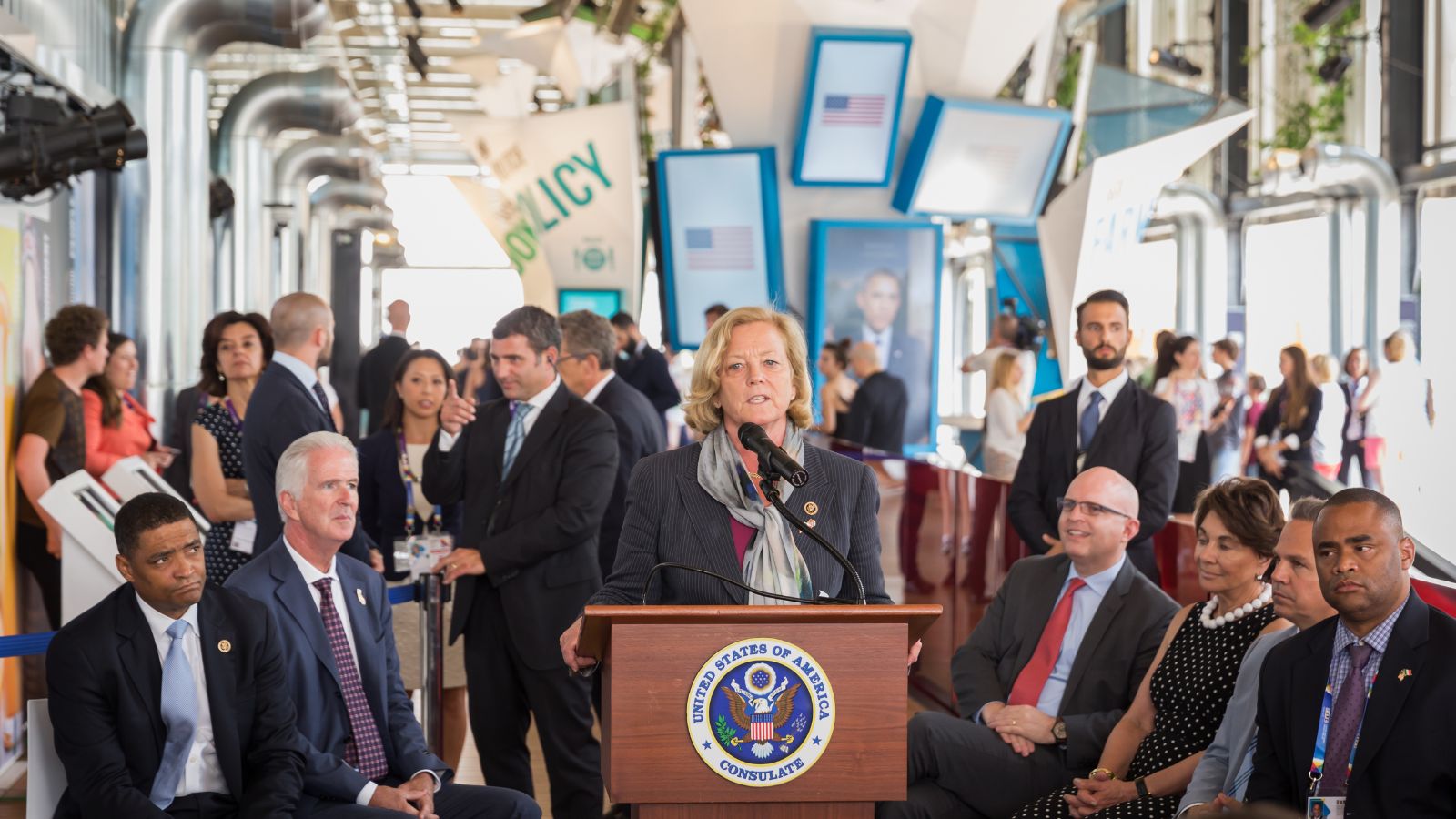In a recent Congressional debate, a heated exchange took place between Representatives Chellie Pingree, a Democrat from Maine, and Marjorie Taylor Greene, a Republican from Georgia. The fiery discussion was centered on the removal of national monuments, with a particular spotlight on the contentious issue of Confederate statues. The exchange that ensued tackled not just a difference in opinion but far-reaching issues related to historical memory, public spaces, and the narrative shaped by a nation’s monuments.
The Premise of the Debate

Pingree sought to bring into focus the role of funds allocated for the removal of these statues, pointing out that these funds are only meant for monuments within the jurisdiction of the Department of the Interior. Greene, on the other hand, voiced strong opposition to the removal of any monument, presenting the move as an attempt by Democrats and the Biden administration to erase history.
Clash Of Views

Representative Pingreea attempted to explain the parameters of the funds set for monument removal whilst Representative Greene staunchly opposed the removal of monuments, representing it as a threat to historical memory. The clash of views showcased the complexities around how a nation interprets and handles historical objects in the public space, specifically in the lens of Confederate monuments.
A Heated Exchange

The disagreement at play was embodied through a passionate debate in the Congressional hall between Representative Chellie Pingree from Maine and Representative Marjorie Taylor Greene from Georgia, where the primary subject of interest was the allocation of funds for national monument removal.
In Defense of Monuments

Greene initiated her argument with a fervent defense of national monuments, especially Confederate monuments, framing their removal as a partisan attempt to revise history by the Democratic party, saying “This is the Democrats’ and the Biden administration’s effort to erase our history, just as they have done to the statue of Robert E. Lee.”
Details of Funding

Pingree interjected, offering insight into the specific financial provisions tied to the removal of monuments situated on land owned by the Department of Interior.
A Controversial Clash

The stage was thus set for an intense discussion, with Greene mounting a strong opposition to the allocation of any fund to the removal of monuments, citing it as an assault on history. She even went so far as to compare the removal of the monuments with book burning, saying passionately; “This is an outrage. This is exactly what they do in communist countries and the Democrats want to accuse us of book burning while we try to get pornography books out of our children’s schools? The Democrats will do nothing to stop their attempts to destroy our nation’s history and we must protect it.”
A Clash of Opinion

Pingree, seeking to lend context, disputed Greene’s claims about the historical personalities involved and underscored the roots of the confederacy tied to the statue in question, saying “Just to clear up a couple of things, my colleague mentioned the Founding Fathers. Robert E. Lee was not actually one of the Founding Fathers, he was a general of the Confederacy,”
The Infamous Lee Statue

The statue of Confederate General Robert E. Lee, once a contentious symbol in Charlotteville, Virginia, served as the pivot for this turbulent debate.
Statues and Their Meanings

The argument over Confederate statues goes beyond financial contention, bringing to light the pain and tumultuous history associated with these monolithic structures. Pingree challenged Greene for her perceived hypocrisy, saying “I just have to say I find it rich that the party that has supported book banning in our libraries, rewriting curriculum, not talking about our history over and over again, is the very one that is saying that we have to often keep painful monuments in places where they do damage, where they interfere with people’s ability to enjoy the particular area that they’re in.”
Removing Monuments: A Source of Contention

The oft-divisive subject of statue removal causes sparks to fly amongst passionate debaters. The balance between preserving history and eradicating symbols of oppression is a difficult tightrope to tread.
Monuments- More than Just Stone

Monuments significantly shape a nation’s narrative and identity. They aren’t mere pieces of stone, but silent storytellers of a nation’s past. The discord around monument removal provokes profound questions about whose history is privileged and told, and whose is silenced and forgotten.
Reconciliation: A Challenging Task

The existence of Confederate monuments presents a hurdle in merging the divided narratives of the Civil War that different factions hold dear.
Monuments within Public Spaces

Public spaces are designed to welcome all citizens. The existence of contentious monuments, however, can engender hostility, making these spaces less inclusive.
The Government’s Role

The fiery debate incites questions about the government’s involvement in shaping these public territories. Where should the government stand – neutrality or support for monument removal?
A Nation’s Reflection

The presence or removal of certain monuments mirrors a nation’s values, necessitating constant reflection and reevaluation as societal attitudes and priorities evolve.
Making the Decision

Decisions regarding monument preservation or demolition should be deliberated with an acute awareness of their effects on national memory and narrative.
Facing the Future

As the nation wrestles with this dilemma, a balance that respects history whilst promoting inclusivity and equity in public areas is crucial.
A Call for Progress

The road to progress must be paved with respect and consideration for each and every citizen’s sentiment, overcoming the shadows of a painful past whilst honoring the complex tapestry of a national narrative.
Terrifying Prospects: 12 Moves Trump Could Unleash If Re-elected in 2024

Terrifying Prospects: 12 Moves Trump Could Unleash If Re-elected in 2024
21 Things MAGA Followers Permanently Destroyed For Everyone Else

21 Things MAGA Followers Permanently Destroyed For Everyone Else
America’s 15 Most Miserable States Revealed: Data Shows Places You Don’t Want to Live

America’s 15 Most Miserable States Revealed: Data Shows Places You Don’t Want to Live
12 Ways the World Suffered from Trump’s Reckless Moves

12 Ways the World Suffered from Trump’s Reckless Moves
Trump’s Hit List: 18 Brands That Incited the Wrath of the Former President

Trump’s Hit List: 18 Brands That Incited the Wrath of the Former President













